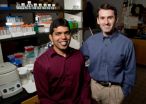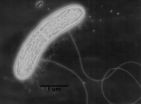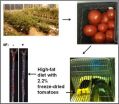(Press-News.org) CHAMPAIGN, Ill. — Illinois chemists have used DNA to do a protein's job, creating opportunities for DNA to find work in more areas of biology, chemistry and medicine than ever before.
Led by Scott Silverman, a professor of chemistry at the University of Illinois at Urbana-Champaign, the researchers published their findings in the journal Proceedings of the National Academy of Sciences.
Ideally, researchers would like to be able to design and build new catalysts from scratch that can do exactly what they want. Many enzymes make small modifications to the building blocks of proteins, amino acids, which can create large changes in a finished protein. However, designing – or even modifying – protein enzymes is a very difficult task, thanks to their complexity and size.
"Protein enzymes are the workhorses of biology," Silverman said. "They do most of the catalytic activity. Our idea is to use another kind of catalyst, artificial DNA sequences, to modify the side chains on proteins, which therefore affects their biological function."
One of the most important – and difficult – reactions in nature is the addition or removal of a phosphate group. In the realm of proteins, the amino acids serine and tyrosine can have phosphate added to or removed from them, which can alter the protein's function or turn enzyme activity on or off. Without help from catalysts, such reactions take a very long time to occur – on the order of thousands to millions of years. So nature uses enzymes called kinases or phosphatases to catalyze these reactions.
Silverman's group identified artificial DNA catalysts that can do phosphatase's job of removing phosphate from serine and tyrosine. Demonstrating that DNA can catalyze such difficult reactions is an important step forward in designing and using DNA catalysts.
"At this point, this is basic science. We're trying to figure out, what kind of reactions can DNA catalyze? And how do we find DNA catalysts that can catalyze these reactions?" Silverman said.
To find the DNA catalysts that can perform a phosphatase reaction, the researchers used a process called in vitro selection. This method searches through vast numbers of DNA sequences to identify the few that could perform a specific activity. The researchers then synthesize those DNA strands and use them for various applications.
"We believe that DNA catalysts can be a very useful tool in the future to study these kinds of protein modifications," said graduate student and co-author Jagadeeswaran Chandrasekar. "To have DNA that you can synthesize on a machine and do catalytic activity on large molecules like proteins is very exciting. We can make fresh new DNA sequences, without requiring a natural starting point, and perform important reactions."
The researchers tested their DNA catalysts' activity in the presence of other large, non-specific proteins, to find out if they would function in an environment resembling the cell. The DNA catalysts were not bothered by the extra company, giving the researchers hope that one day their DNA catalysts could be used for practical applications in vivo.
Next, the researchers will continue to refine the in vitro selection process and hope to identify more DNA catalysts, designing and building molecules to perform specific functions.
"This kind of finding is enabling because it shows that DNA catalysis of biologically interesting processes is possible," Silverman said, "and with this outcome we can have confidence that the broader objectives of this kind of research are likely to be achievable."
INFORMATION:
The National Institutes of Health, the Defense Threat Reduction Agency and the National Science Foundation supported this work. Silverman also is a professor of biochemistry and of biophysics at the U. of I.
Editor's note: To reach Scott Silverman, call 217-244-4489; email sks@illinois.edu.
The paper, "Catalytic DNA with phosphatase activity," is available online.
DNA catalysts do the work of protein enzymes
2013-03-19
ELSE PRESS RELEASES FROM THIS DATE:
UMass Amherst researchers reveal mechanism of novel biological electron transfer
2013-03-19
AMHERST, Mass. – When researchers at the University of Massachusetts Amherst led by microbiologist Derek Lovley discovered that the bacterium Geobacter sulfurreducens conducts electricity very effectively along metallic-like "microbial nanowires," they found physicists quite comfortable with the idea of such a novel biological electron transfer mechanism, but not biologists.
"For biologists, Geobacter's behavior represents a paradigm shift. It goes against all that we are taught about biological electron transfer, which usually involves electrons hopping from one molecule ...
Sex between monogamous heterosexuals rarely source of hepatitis C infection
2013-03-19
Individuals infected by the hepatitis C virus (HCV) have nothing to fear from sex in a monogamous, heterosexual relationship. Transmission of HCV from an infected partner during sex is rare according to new research published in the March issue of Hepatology, a journal published by Wiley on behalf of the American Association for the Study of Liver Diseases (AASLD).
Experts estimate that HCV affects up to 4 million Americans, most of whom are sexually active. Medical evidence shows HCV is primarily transmitted by exposure to infectious blood, typically through intravenous ...
Greenhouse gas policies ignoring gap in household incomes: University of Alberta study
2013-03-19
Government policies aimed at reducing greenhouse gas emissions from consumers need to be fairer for household income levels, says a University of Alberta researcher.
A U of A study published recently online in the journal Environment and Behaviour looks at the different sources of greenhouse gas emissions from consumers, based on their income levels. The wealthiest households in Alberta emit the most greenhouse gases, but too often, income disparity hasn't been factored in to current polices—such as the carbon flat tax that is levied to British Columbia residents.
Such ...
Kill Bill character inspires the name of a new parasitoid wasp species
2013-03-19
Parasitoid wasps of the family Braconidae are known for their deadly reproductive habits. Most of the representatives of this group have their eggs developing in other insects and their larvae, eventually killing the respective host, or in some cases immobilizing it or causing its sterility. Three new species of the parasitoid wasp genus Cystomastacoides, recently described in the Journal of Hymenoptera Research, reflect this fatal behavior.
Two of the new species were discovered in Papua New Guinea, while the third one comes from Thailand. The Thai species, Cystomastacoides ...
Newly incarcerated have 1 percent acute hepatitis C prevalence
2013-03-19
A study published in the March issue of Hepatology, a journal of the American Association for the Study of Liver Diseases, estimates that the prevalence of acute hepatitis C virus (HCV) infection is nearly one percent among newly incarcerated inmates with a history of recent drug use. Findings suggest that systematic screening of intravenous (IV) drug users who are new to the prison system could identify more than 7,000 cases of HCV across the U.S. annually—even among asymptomatic inmates.
According to the National Institute of Allergy and Infectious Diseases Health—the ...
Pre-college talk between parents and teens likely to lessen college drinking
2013-03-19
Teen-age college students are significantly more likely to abstain from drinking or to drink only minimally when their parents talk to them before they start college, using suggestions in a parent handbook developed by Robert Turrisi, professor of biobehavioral health, Penn State.
"Over 90 percent of teens try alcohol outside the home before they graduate from high school," said Turrisi. "It is well known that fewer problems develop for every year that heavy drinking is delayed. Our research over the past decade shows that parents can play a powerful role in minimizing ...
Brain-mapping increases understanding of alcohol's effects on first-year college students
2013-03-19
A research team that includes several Penn State scientists has completed a first-of-its-kind longitudinal pilot study aimed at better understanding how the neural processes that underlie responses to alcohol-related cues change during students' first year of college.
Anecdotal evidence abounds attesting to the many negative social and physical effects of the dramatic increase in alcohol use that often comes with many students' first year of college. The behavioral changes that accompany those effects indicate underlying changes in the brain. Yet in contrast to alcohol's ...
Conscientious people are more likely to have higher GPAs
2013-03-19
Conscientious people are more likely to have higher grade point averages, according to new research from psychologists at Rice University.
The paper examines previous studies that research the link between the "Big Five" personality traits –agreeableness, conscientiousness, extraversion, neuroticism and openness to experience – and college grade point average. It finds that across studies, higher levels of conscientiousness lead to higher college grade point averages. It also shows that five common personality tests are consistent in their evaluation of the "Big Five" ...
UCLA researchers create tomatoes that mimic actions of good cholesterol
2013-03-19
UCLA researchers have genetically engineered tomatoes to produce a peptide that mimics the actions of good cholesterol when consumed.
Published in the April issue of the Journal of Lipid Research and featured on the cover, their early study found that mice that were fed these tomatoes in freeze-dried, ground form had less inflammation and plaque build-up in their arteries.
"This is one of the first examples of a peptide that acts like the main protein in good cholesterol and can be delivered by simply eating the plant," said senior author Dr. Alan M. Fogelman, executive ...
High-carb intake in infancy has lifelong effects, UB study finds
2013-03-19
BUFFALO, N.Y. – Consumption of foods high in carbohydrates immediately after birth programs individuals for lifelong increased weight gain and obesity, a University at Buffalo animal study has found, even if caloric intake is restricted in adulthood for a period of time.
The research on laboratory animals was published this month in the American Journal of Physiology: Endocrinology and Metabolism; it was published online in December.
"This is the first time that we have shown in our rat model of obesity that there is a resistance to the reversal of this programming ...




